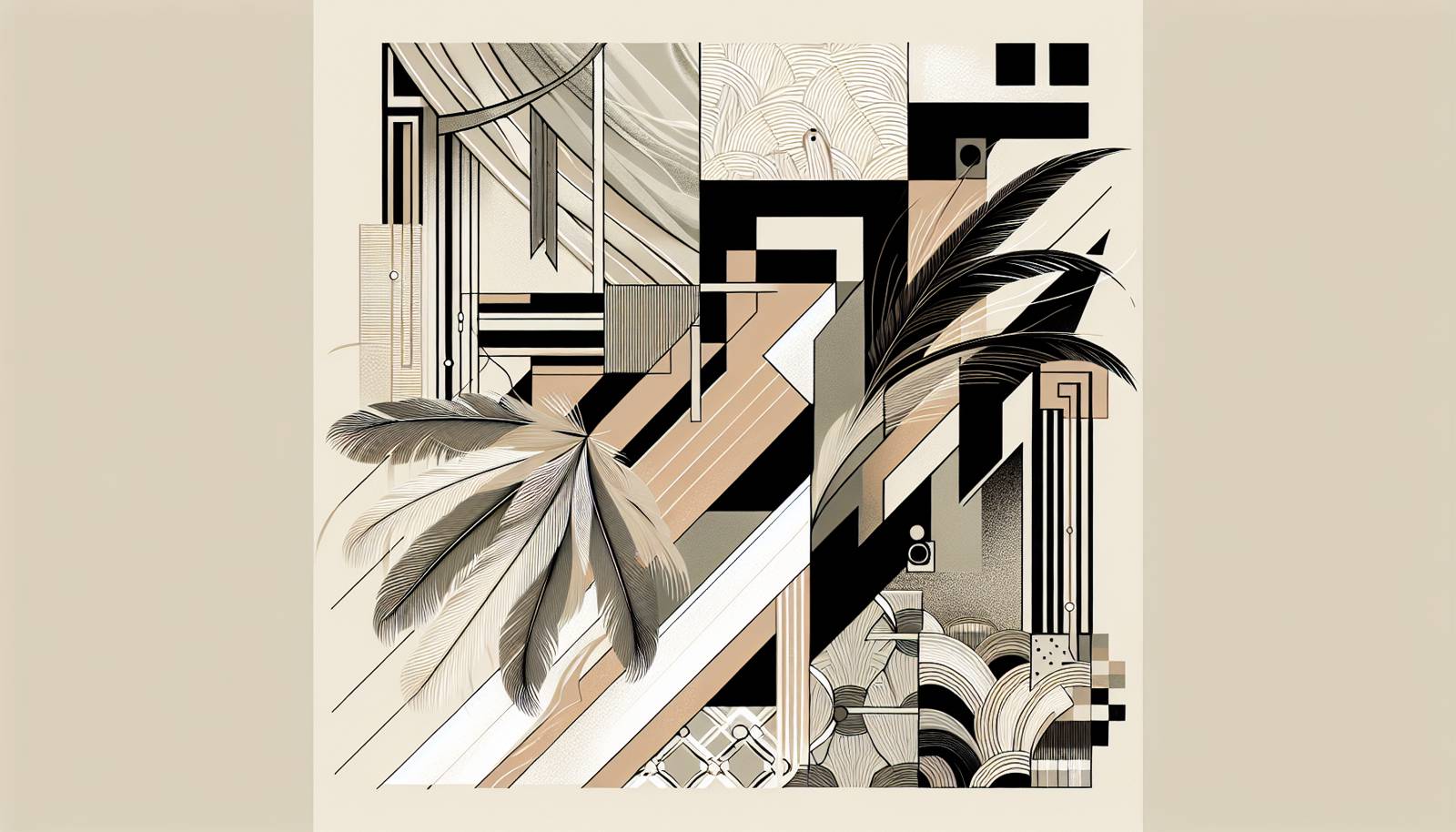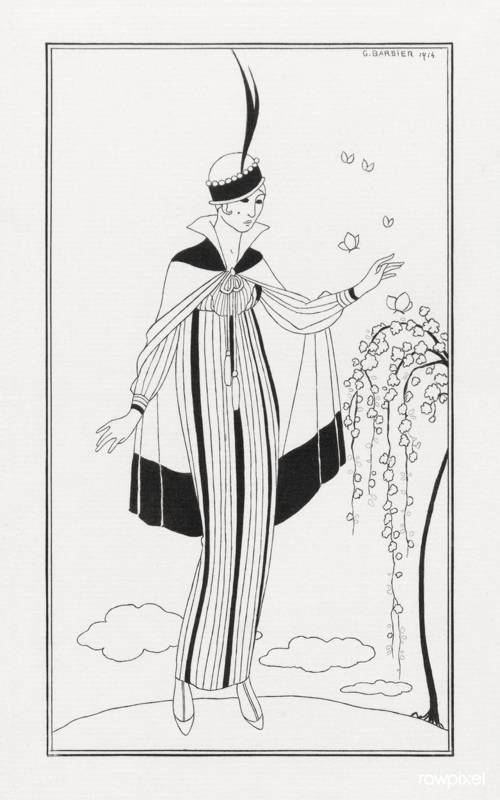
FAQ About Cultural Influence of Jazz Age Fashion

What is the Jazz Age?
The Jazz Age refers to the period in the 1920s, particularly in America, where jazz music and dance became popular and influential. It was a time marked by economic prosperity, cultural shifts, and a significant change in social norms and lifestyles, trending towards greater freedoms and modernization.

How did Jazz Age fashion differ from previous periods?
Jazz Age fashion was characterized by its distinct departure from the restrictive and formal styles of the Victorian and Edwardian eras. It embraced looser silhouettes, such as the flapper dress, shorter hemlines, and the use of lighter fabrics. This era also saw the introduction of more casual styles for both men and women, reflective of the social liberation of the time.

What were popular fashion trends during the Jazz Age?
Popular fashion trends during the Jazz Age included flapper dresses with their loose, straight lines and embellishments like sequins and fringe, cloche hats, bobbed hairstyles, and men's suits that were often less rigid in style. Accessories such as long pearl necklaces and feather headbands were also popular among women.

Why are flapper dresses iconic to the Jazz Age?
Flapper dresses are iconic to the Jazz Age because they symbolized the newfound freedom and rebelliousness of women during the 1920s. These dresses were designed to provide ease of movement for dancing and reflected a break from traditional gender roles, allowing women to express themselves more freely through their fashion choices.

How did Jazz Age fashion influence women's roles in society?
Jazz Age fashion played a significant role in the changing perception of women's roles in society. The adoption of styles such as the flapper dress represented a break from traditional notions of femininity and modesty. This era also coincided with women gaining more social freedoms, including the right to vote, and entering the workforce in greater numbers.

What role did jazz music play in influencing fashion during the Jazz Age?
Jazz music played a pivotal role in influencing fashion during the Jazz Age by providing a soundtrack for the era's cultural transformation. The lively nature of jazz music was mirrored in the vibrant and carefree fashion styles of the time. Dance clubs and social events, often centered around jazz performances, became platforms for fashion trends to emerge and evolve.

How did men’s fashion change during the Jazz Age?
During the Jazz Age, men's fashion became more relaxed and less formal compared to prior decades. Suits became more fitted, and trousers featured wider legs. Hats, such as fedoras and Panama hats, became stylish accessories. The period also saw an increased adoption of sportswear as casual wear, emphasizing comfort and mobility.

What lasting impacts has Jazz Age fashion had on modern styles?
Jazz Age fashion has had a lasting impact on modern styles in several ways. The emphasis on freedom and self-expression in clothing continues to be a principle in contemporary fashion. Elements from this era, such as flapper-inspired dresses, cloche hats, and bob hairstyles, periodically resurface in modern fashion collections, showcasing their timeless appeal.

Were there any notable fashion designers from the Jazz Age?
Several notable fashion designers emerged during the Jazz Age, including Coco Chanel, whose designs embraced the casual and chic look that defined the era. Chanel's contributions, such as the introduction of the little black dress, have had a lasting influence on fashion. Other designers like Jeanne Lanvin and Jean Patou also made significant impacts with their innovative designs.

How did the rise of the flapper lifestyle influence fashion?
The rise of the flapper lifestyle had a significant influence on fashion by promoting a carefree, youthful, and rebellious aesthetic. Flappers wore dresses with no defined waistlines, often with shorter hemlines, and incorporated bold makeup and bobbed hair. This lifestyle also encouraged social freedoms which were mirrored in the liberating fashion styles of the time.

What materials were commonly used in Jazz Age fashion?
Materials commonly used in Jazz Age fashion included silk, satin, velvet, and chiffon, which were favored for their luxurious feel and ability to flow beautifully in movement. These fabrics facilitated the era's elegant draping and embellishments, such as beading and sequins, which were hallmarks of 1920s fashion.

How did proletarian and wealthy classes differ in Jazz Age fashion?
During the Jazz Age, there was a noticeable distinction between the fashion of the proletarian class and the wealthy. While wealthy classes could afford the latest fashion trends and luxurious materials, the working classes often wore simplified versions of these styles or stuck to more practical, durable clothing that was suitable for work.

What is a cloche hat and why was it popular?
A cloche hat is a close-fitting bell-shaped hat that became extremely popular during the Jazz Age. It was worn snugly on the head, often covering the forehead and framing short, bobbed hairstyles. Its popularity stemmed from its stylish simplicity and ability to complement the era's fashionable flapper dresses.

How did Jazz Age fashion reflect the cultural and social shifts of the 1920s?
Jazz Age fashion reflected the cultural and social shifts of the 1920s by breaking away from traditional norms and emphasizing freedom and individuality. The styles were reflective of the era’s economic prosperity, the empowerment of women, and a shift towards more secular and modern values, as well as an increased focus on leisure and entertainment.

What influence did Jazz Age fashion have on modern women's empowerment?
Jazz Age fashion influenced modern women's empowerment by challenging traditional gender norms and allowing women to express themselves in ways that were previously frowned upon. The more androgynous and freeing styles symbolized women stepping into new roles both socially and economically.

How did technology impact Jazz Age fashion?
Technology during the Jazz Age impacted fashion through advancements such as the development of synthetic fabrics and improvements in mass production techniques. This allowed for more affordable and widely available fashion, making trendy clothing more accessible to a broader audience.

Did Jazz Age fashion influence other art forms?
Yes, Jazz Age fashion influenced other art forms, including visual arts, literature, and cinema. The era's vibrant and bold aesthetic, as well as its themes of individuality and freedom, were mirrored in the Art Deco movement, the novels of F. Scott Fitzgerald, and films that depicted the lavish lifestyles and changing social norms of the time.

Were children’s fashions influenced by the Jazz Age?
Children's fashion during the Jazz Age saw some influence from the adult styles, with simpler and more playful adaptations. For example, girls' dresses had looser fits and lighter fabrics, reflecting the practical and less restrictive styles of women’s fashion during the era. Boys often wore short trousers with shirts, a more casual style echoing men’s fashion trends.

How did global cultures adapt Jazz Age fashion?
Global cultures adapted Jazz Age fashion in various ways, often blending it with local traditions. While the core elements of Jazz Age style were adopted, such as looser silhouettes and shorter hemlines, variations emerged to align with cultural nuances. The influence of Western cinema and media helped spread these fashion trends worldwide.
